Imbalance in Spatial Accessibility to Primary and Secondary Schools in China: Guidance for Education Sustainability
Abstract
:1. Introduction
2. Materials and Methods
2.1. Study Area and Data Preparation
2.2. Methodology
2.2.1. Disparity Analysis by Theil Index
2.2.2. Spatial Analysis
3. Results and Analyses
3.1. Overall National Scale
3.1.1. Terrain Partitioned Mode (Eastern, Central, and Western China)
3.1.2. Economic Development Partitioned Mode (Eight Economic Zones)
3.1.3. Province-Level Partitioned Mode (31 Provinces and Municipalities)
3.2. Spatial Pattern Analysis
3.2.1. Global Autocorrelation
3.2.2. Local Autocorrelation
4. Discussions
4.1. Spatial Distribution
4.2. Spatial Pattern
5. Conclusions
Acknowledgments
Author Contributions
Conflicts of Interest
References
- Zhang, L.; Huang, J.; Rozelle, S. Employment, emerging labor markets, and the role of education in rural china. China Econ. Rev. 2002, 13, 313–328. [Google Scholar] [CrossRef]
- Oreopoulos, P. The compelling effects of compulsory schooling: Evidence from Canada. Can. J. Econ. 2006, 39, 22–52. [Google Scholar] [CrossRef]
- Acemoglu, D.; Angrist, J. How large are human-capital externalities? Evidence from compulsory-schooling laws. Nber Macroecon. Annu. 2000, 15, 9–59. [Google Scholar] [CrossRef]
- Hanushek, E.A.; Wößmann, L. The role of education quality in economic growth (Part I). Educ. Stud. 2007, 100, 86–116. [Google Scholar]
- Brunello, G.; Fort, M.; Weber, G. Changes in compulsory schooling, education and the distribution of wages in Europe. Econ. J. 2009, 119, 516–539. [Google Scholar] [CrossRef]
- Huffman, W.E. Decision making: The role of education. Am. J. Agric. Econ. 1974, 56, 85–97. [Google Scholar] [CrossRef]
- Yang, D.T. Education and allocative efficiency: Household income growth during rural reforms in China. J. Dev. Econ. 2004, 74, 137–162. [Google Scholar] [CrossRef]
- Albouy, V.; Lequien, L. Does compulsory education lower mortality? J. Health Econ. 2009, 28, 155–168. [Google Scholar] [CrossRef] [PubMed]
- Llerasmuney, A. The relationship between education and adult mortality in the United States. Gen. Inf. 2005, 72, 189–221. [Google Scholar]
- Wail, B.; Hanchane, S.; Kamal, A. A new data set of educational inequality in the world, 1950–2010: Gini index of education by age group. SSRN Electr. J. 2011, 104, 184–198. [Google Scholar] [CrossRef]
- Meschi, E.; Scervini, F. A new dataset on educational inequality. Empir. Econ. 2014, 47, 695–716. [Google Scholar] [CrossRef]
- Thomas, V.; Wang, Y.; Fan, X. A New Dataset on Inequality in Education: Gini and Theil Indices of Schooling for 140 Countries 1960–2000; The World Bank: Washington, DC, USA, 2002. [Google Scholar]
- Ajala, O.A.; Asres, K. Accessibility in equality to basic education in Amhara Region, Ethiopia. Ethiop. J. Educ. Sci. 2008. [Google Scholar] [CrossRef]
- Bennett, D.L. Educational inequality in the United States: Methodology and historical estimation of education Gini coefficients. Cent. Coll. Affordabil. Product. 2011. [Google Scholar] [CrossRef]
- Wu, H. Educational justice policy: Problem and solution. J. Northeast Norm. Univ. Philos. Soc. Sci. 2007, 2, 151–155. (In Chinese) [Google Scholar]
- Zhai, B. Demonstrative analysis on the equilibrium development of Chinese basic education. Educ. Res. 2007, 7, 22–30. (In Chinese) [Google Scholar]
- Hu, Y.Z. The Compulsory education policy choice from the perspective of the theory on equalization of basic public services. TsingHua J. Educ. 2009, 30, 66–72. [Google Scholar]
- Zhou, J.Y. A Construction of educational equity indicator system in China. Educ. Sci. 2006, 1, 13–15. (In Chinese) [Google Scholar]
- Wu, X. Economic transition, school expansion and educational inequality in China, 1990–2000. Res. Soc. Stratif. Mobil. 2010, 28, 91–108. [Google Scholar] [CrossRef]
- Hannum, E. Poverty and basic education in rural China: Villages, households, and girls’ and boys’ enrollment. Comp. Educ. Rev. 2003, 47, 141–159. [Google Scholar] [CrossRef]
- Xue, L.R.; Shi, T. Inequality in Chinese education. J. Contemp. China. 2001, 10, 107–124. [Google Scholar]
- Liang, X.F.; Qiao, T.W. Urban equity of compulsory education—Empirical data from a city. Manag. World. 2006, 4, 48–56. (In Chinese) [Google Scholar]
- National Education Supervision. State educational supervision report 2005—Balanced development of compulsory education: Public education resources disposition status. Educ. Dev. 2006, 9, 1–8. (In Chinese) [Google Scholar]
- Tsang, M.C.; Ding, Y.Q. Resource utilization and disparities in compulsory education in China. Econ. Educ. Rev. 2005, 2, 34–40. (In Chinese) [Google Scholar]
- Xue, H.P.; Wang, R. Education production function and the equity of compulsory education. Educ. Res. 2010, 1, 9–17. (In Chinese) [Google Scholar]
- Zhong, X.M.; Zhao, H.L. The equity of compulsory education in China: In the perspective of resources allocation. J Shanghai Univ. Financ. Econ. 2009, 6, 89–96. (In Chinese) [Google Scholar]
- Hannum, E.; Wang, M. Geography and educational inequality in china. China Econ. Rev. 2006, 17, 253–265. [Google Scholar] [CrossRef]
- Ogunyemi, S.A.; Muibi, K.H.; Eguaroje, O.E.; Fabiyi, O.O.; Halilu, A.S. A geospatial approach to evaluation of accessibility to secondary educational institution in Ogun State, Nigeria. IOP Conf. Ser. Earth Environ. Sci. 2014. [Google Scholar] [CrossRef]
- Han, Y.H.; Lu, Y.Q. Accessibility assessment and planning of public service facilities for education: A Case study on senior high schools in Yizheng City. Sci. Geogr. Sin. 2012, 7, 822–827. (In Chinese) [Google Scholar]
- Hu, S.Q.; Xu, J.G.; Zhang, X.; Cao, H.J. Temporal accessibility based educational facilities even development evaluation: Huai’an new city planning example. Planners 2012, 1, 70–75. (In Chinese) [Google Scholar]
- Kong, Y.F.; Li, X.J.; Zhang, X.F. Analysis of spatial accessibility for school redistricting in rural China: A case study of the secondary schools in Gongyi City, Henan Province. J. Remote Sens. 2008, 5, 800–809. (In Chinese) [Google Scholar]
- Akita, T. Decomposing regional income inequality in china and Indonesia using two-stage nested Theil decomposition method. Ann. Reg. Sci. 2003, 37, 55–77. [Google Scholar] [CrossRef]
- Ord, J.K.; Getis, A. Local spatial autocorrelation statistics: Distributional Issues and an Application. Geogr. Anal. 1995, 27, 286–306. [Google Scholar] [CrossRef]
- Legendre, P. Spatial autocorrelation: Trouble or new paradigm? Ecology 1993, 74, 1659–1673. [Google Scholar] [CrossRef]
- Anselin, L. Local indicators of spatial association—Lisa. Geogr. Anal. 1995, 27, 93–115. [Google Scholar] [CrossRef]
- Anselin, L.; Syabri, I.; Kho, Y. Geoda: An introduction to spatial data analysis. Geogr. Anal. 2005, 38, 5–22. [Google Scholar] [CrossRef]
- Pan, S.R. Physical Geography; Higher Education Press: Beijing, China, 1985. [Google Scholar]
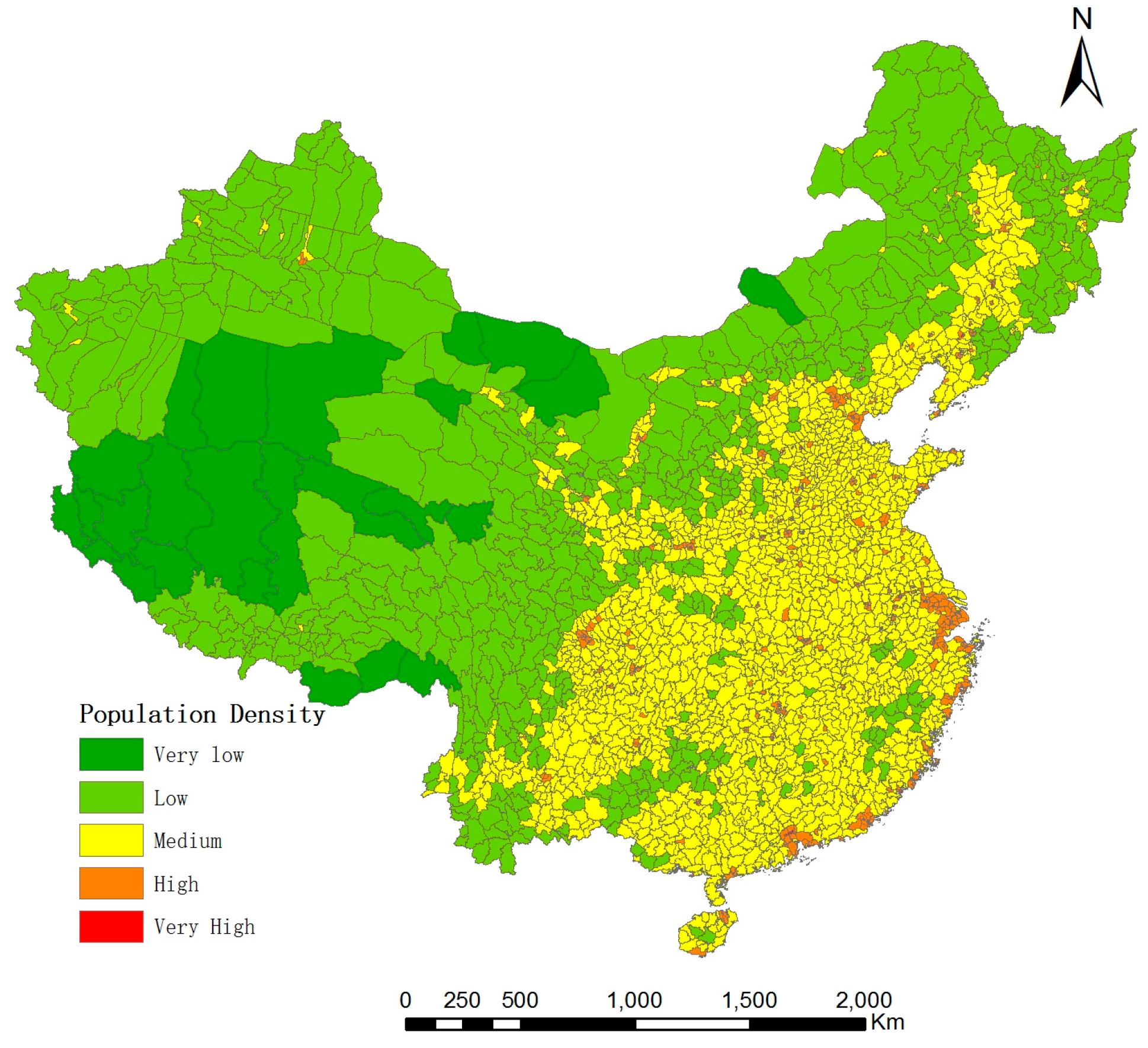

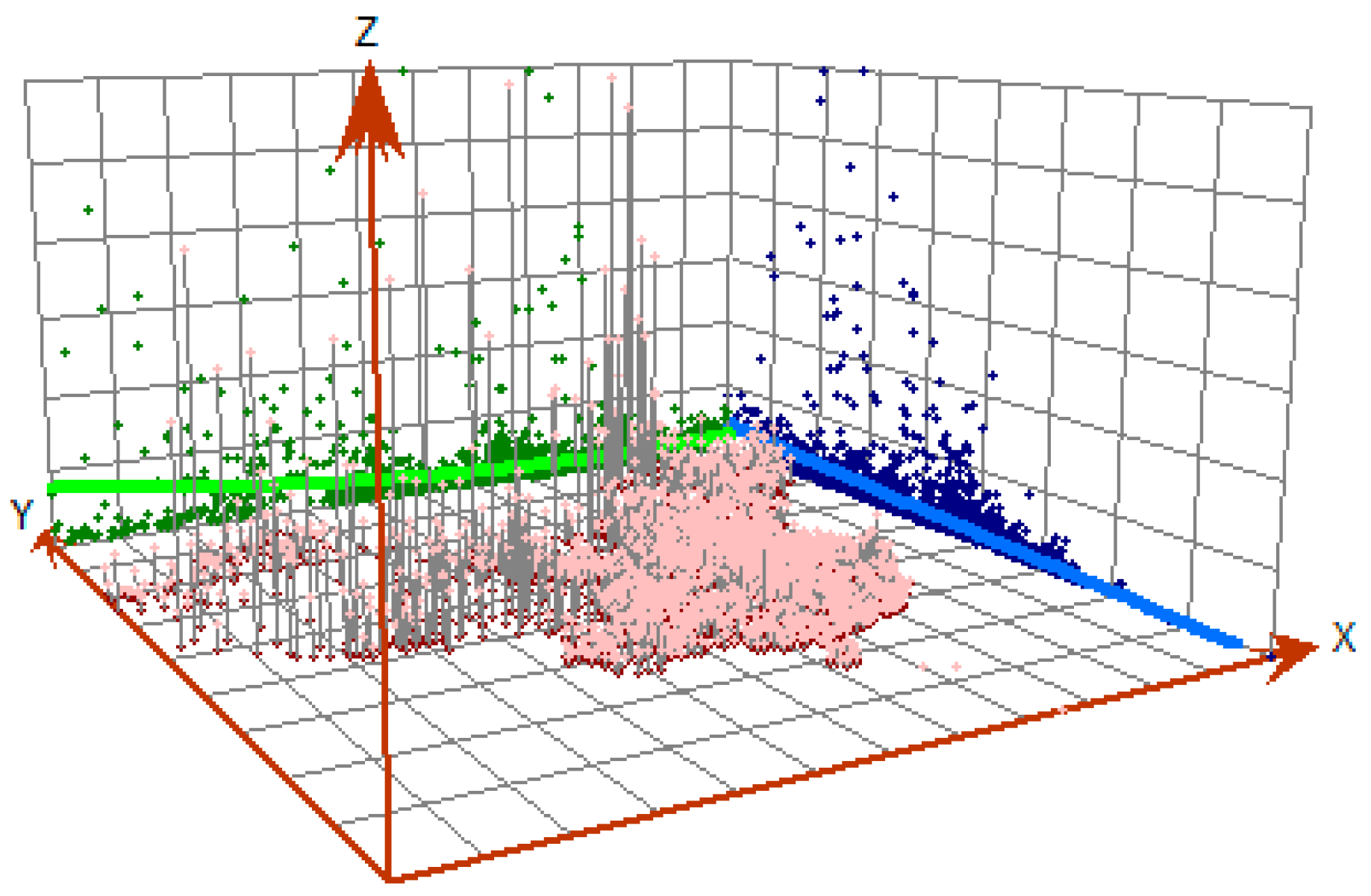
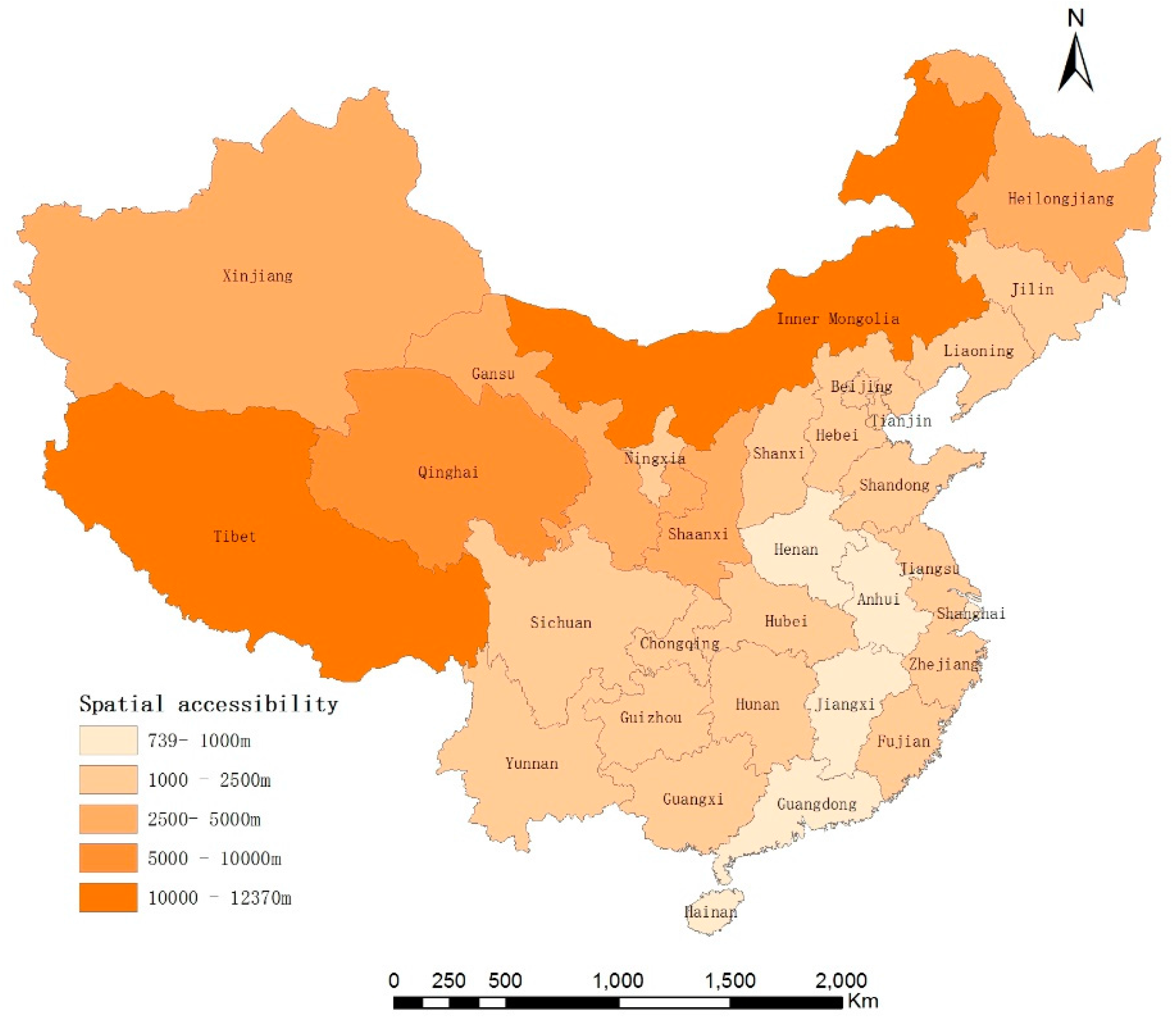

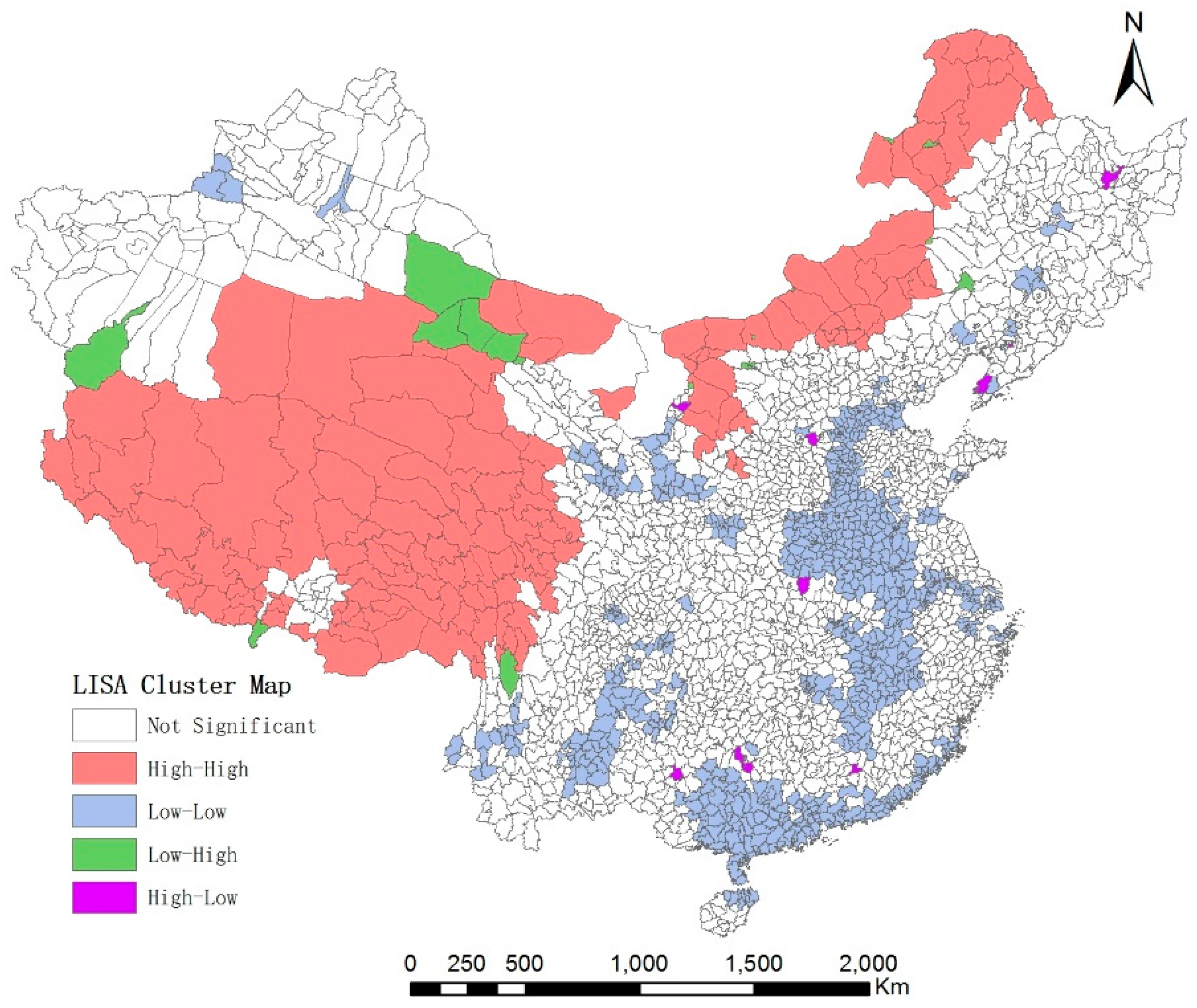
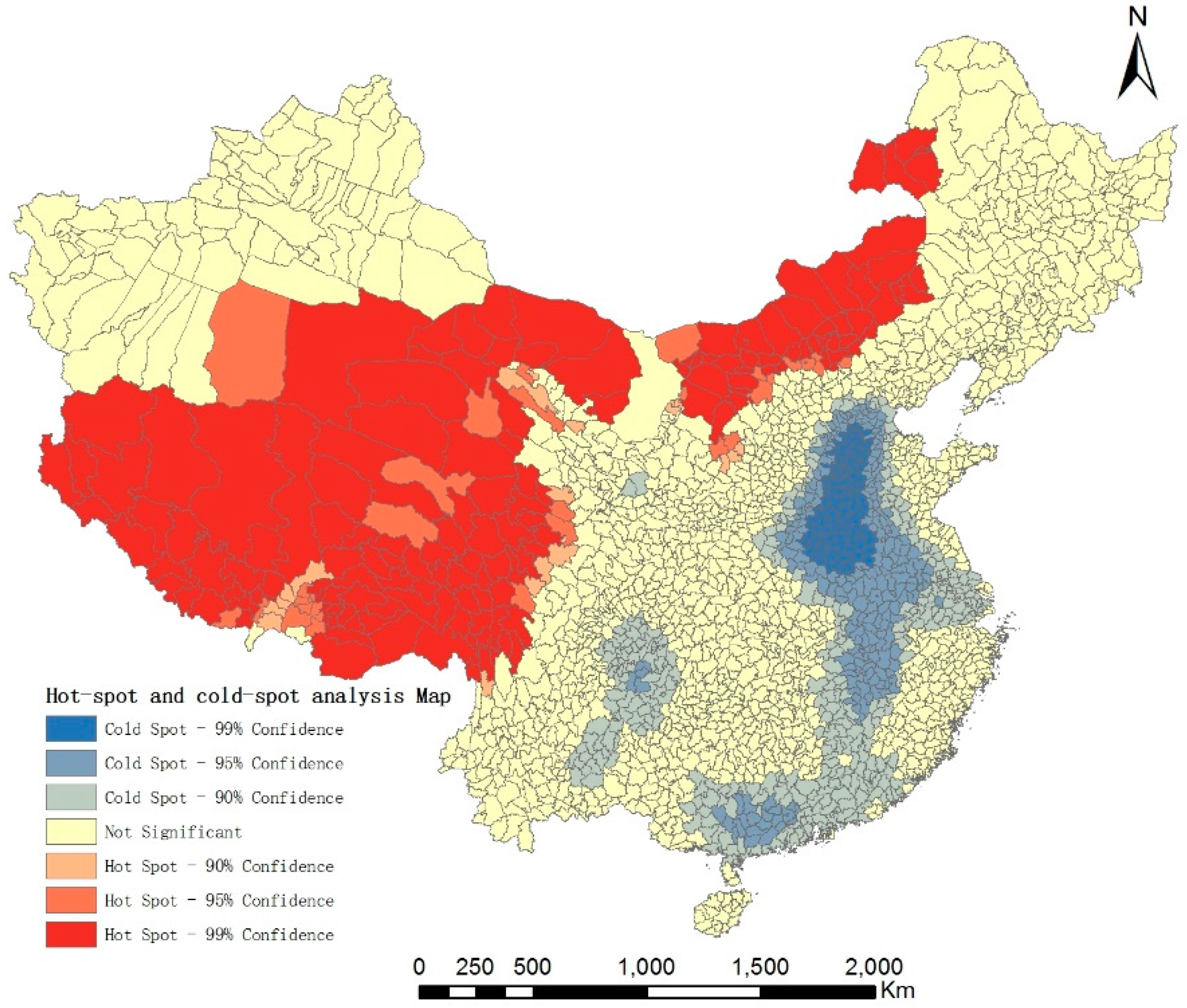
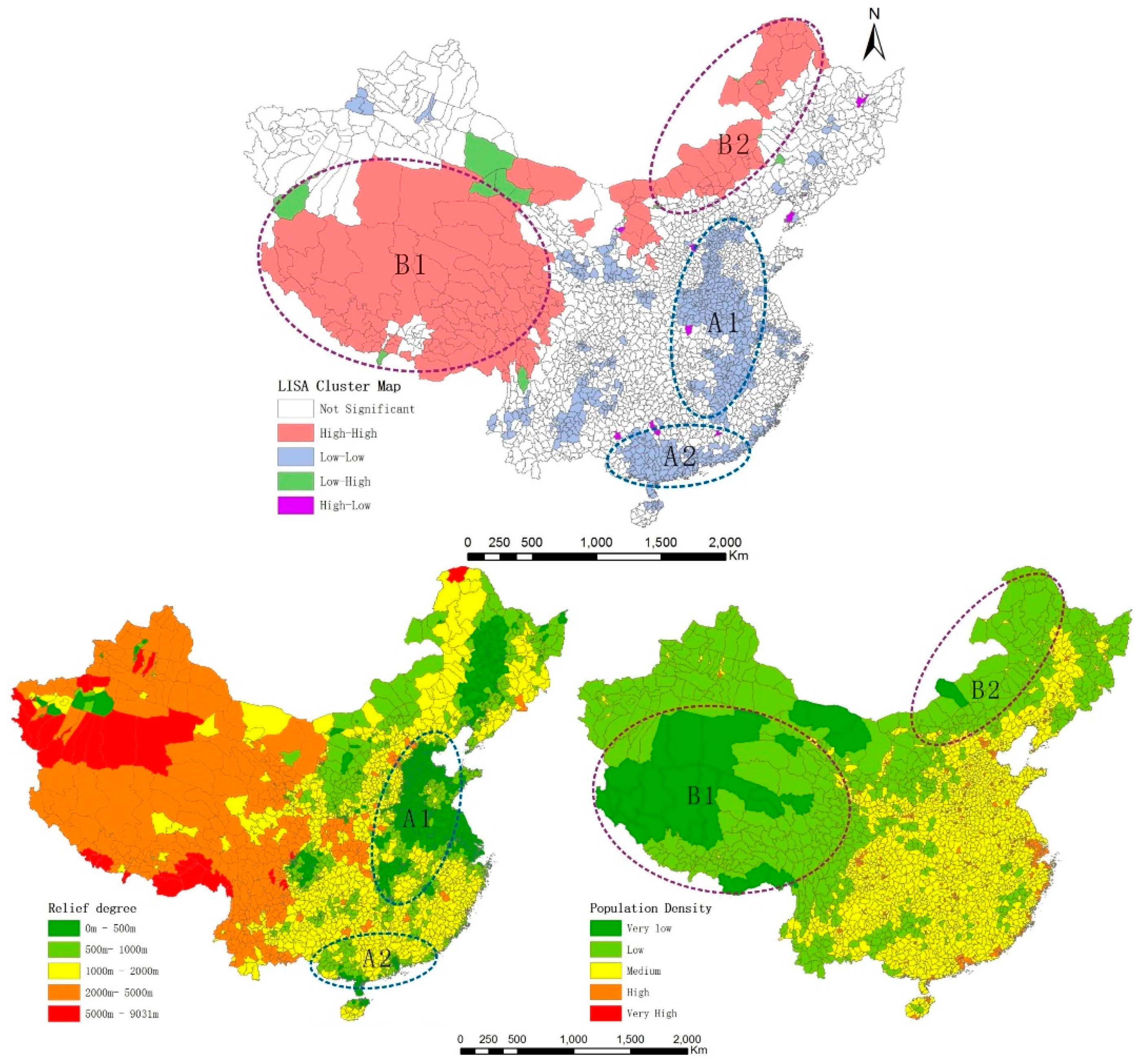
| Spatial Accessibility (m) | Eastern China | Central China | Western China |
|---|---|---|---|
| Average | 1315.16 | 1695.91 | 4093.59 |
| Maximum | 2171.22 | 2854.45 | 12,369.19 |
| Minimum | 796.24 | 739.18 | 1091.25 |
| Theil index | −0.04 | −0.02 | 0.22 |
| Spatial Accessibility (m) | Northern Coastal Areas | The Middle Reaches of the Yellow River Region | Northeast Region | Eastern Coastal Areas | The Middle Reaches of the Yangtze River Region | Southern Coastal Areas | Southwest Region | Northwest Region |
|---|---|---|---|---|---|---|---|---|
| Average | 1344.32 | 4450.59 | 2149.35 | 1369.75 | 1434.49 | 1105.85 | 1571.44 | 5301.52 |
| Maximum | 1599.78 | 12,036.99 | 2854.45 | 2171.21 | 2079.70 | 1496.72 | 2413.31 | 12,369.19 |
| Minimum | 1014.34 | 739.18 | 1662.68 | 796.24 | 849.13 | 906.35 | 1091.25 | 1184.77 |
| Theil index | −0.0166 | 0.110919 | −0.00141 | −0.00792 | −0.01689 | −0.01203 | −0.01767 | 0.119914 |
© 2016 by the authors; licensee MDPI, Basel, Switzerland. This article is an open access article distributed under the terms and conditions of the Creative Commons Attribution (CC-BY) license (http://creativecommons.org/licenses/by/4.0/).
Share and Cite
Gao, Y.; He, Q.; Liu, Y.; Zhang, L.; Wang, H.; Cai, E. Imbalance in Spatial Accessibility to Primary and Secondary Schools in China: Guidance for Education Sustainability. Sustainability 2016, 8, 1236. https://doi.org/10.3390/su8121236
Gao Y, He Q, Liu Y, Zhang L, Wang H, Cai E. Imbalance in Spatial Accessibility to Primary and Secondary Schools in China: Guidance for Education Sustainability. Sustainability. 2016; 8(12):1236. https://doi.org/10.3390/su8121236
Chicago/Turabian StyleGao, Yuan, Qingsong He, Yaolin Liu, Lingyu Zhang, Haofeng Wang, and Enxiang Cai. 2016. "Imbalance in Spatial Accessibility to Primary and Secondary Schools in China: Guidance for Education Sustainability" Sustainability 8, no. 12: 1236. https://doi.org/10.3390/su8121236







